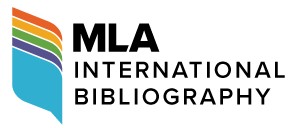Abstract
Lin Chuanjia's A History of Chinese Literature is a pioneering work in the teaching and research of modern literary history. However, it reflects the traditional Chinese perspective of literature and literary history. Lin's work has been widely criticized for its significant differences in concepts and methods compared to the mainstream literary history works that followed. In his book, Lin integrated the literary historical concepts of the Tongcheng School and the Yangzhou School of the modern times. He adopted the curriculum framework of “Research Methods of Chinese Literature” from the Imperial University of Peking and focused on describing literary works and enumerating literary styles as its core content. The book is divided into sixteen special topics, each of which is narrated in the form of a general history, following the traditional style of a “record of historical events”. Lin's approach organizes literary history based on the traditional division of literature into the four categories: classics, histories, philosophers and collections. This differs significantly from the later literary histories that adopt a diachronic structure and classify literature into unitary forms of poetry, prose, fiction, and drama. Lin's work emphasizes “literary works”, devoting more content to ancient prose and parallel prose. While his treatment of poetry history is not particularly systematic, and he expresses some disdain for fiction and drama, he still includes them in a timely manner. It can be said that Lin's work is a literary history of a classical nature, presenting ancient knowledge in a new form.
Keywords
Lin Chuanjia, literary history, Imperial University of Peking, classical studies
First Page
56
Last Page
70
Recommended Citation
Qian, Zhixi. 2025. "Viewing Lin Chuanjia's A History of Chinese Literature from the Perspective of Classical Studies." Theoretical Studies in Literature and Art 45, (1): pp.56-70. https://tsla.researchcommons.org/journal/vol45/iss1/6


